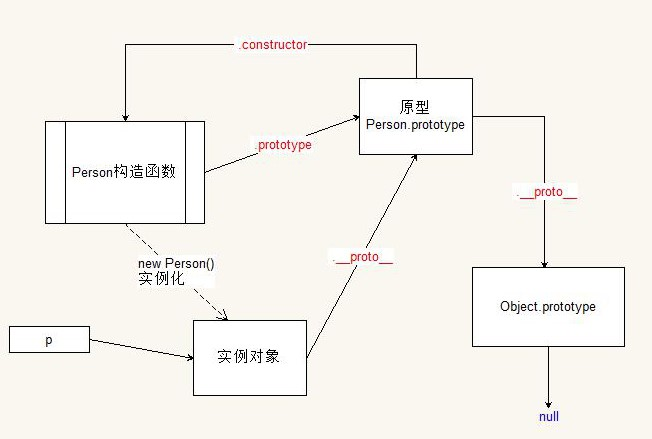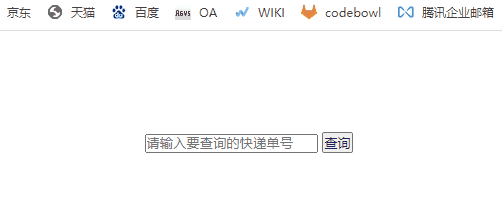目录
- 1、原型模式
- 示例一
- 示例二
- 示例三
- 2、观察者模式
1、原型模式
原型模式用于在创建对象时,通过共享某个对象原型的属性和方法,从而达到提高性能、降低内存占用、代码复用的效果。
示例一
function Person(name) {
this.name = name;
this.config = {
a: "1",
b: "2",
};
this.hello = function () {
console.info("hello");
};
}
假如需要通过以上代码创建 100 个实例,那么将需要创建 100 个 config、100 个 hello,而这两个东西在每个实例里面是完全一样的。
因此我们可以通过提取公共代码的方式进行油优化。
const config = {
a: "1",
b: "2",
};
const hello = function () {
console.info("hello");
};
function Person(name) {
this.name = name;
this.config = config;
this.hello = hello
}
这样的方式使得无论创建多少个Person对象都只需要创建一个config、一个hello。 但是仍然污染全局变量、config被误修改、Person和其他代码耦合大、不易于代码扩展维护等问题。
因此可以通过原型的方式进行优化。
function Person() {}
var p = new Person();
该函数创建实例时原型图如下:

示例二
function Person(name) {
this.name = name;
this.config = {
a: "1",
b: "2",
};
this.hello = function () {
console.info("hello");
};
}
//此方式会重写prototype,造成constructor丢失,变为Object()。
//可以使用Person.prototype.xx=yy的方式写,或者重新指定Person.prototype.constructor=Person
Person.prototype = {
version: 1.0,
say: function (arg) {
console.info(`${this.name} say ${arg}`);
},
constructor: Person,
};
var p1 = new Person("p1");
var p2 = new Person("p2");
console.info(p1.config == p2.config); //false
console.info(p1.hello == p2.hello); //false
console.info(p1.say === p2.say); //true
p1.say("qq");
p2.say("qq");
console.info(p1.version === p2.version); //true
console.info(p1.version);
该函数创建实例时原型图如下:

示例三
function Person(name) {
this.name = name;
this.config = {
a: "1",
b: "2",
};
this.hello = function () {
console.info("hello");
};
}
//此方式会重写prototype,造成constructor丢失,变为Object()
Person.prototype = {
version: 1.0,
say: function (arg) {
console.info(`${this.name} say ${arg}`);
},
};
function PersonA(name) {
Person.call(this, name);
}
PersonA.prototype = Person.prototype;
function PersonB(name) {
Person.call(this, name);
}
PersonB.prototype = Person.prototype;
var pA = new PersonA("pa");
var pB = new PersonB("pb");
console.info(pA.config == pB.config); //false 内部属性比较
console.info(pA.hello == pB.hello); //false 内部属性比较
console.info(pA.say === pB.say); //true 原型方法共享
pA.say("qq");
pB.say("qq");
console.info(pA.version === pB.version); //true 原型属性共享
console.info(pA.version); //1.0
Person.prototype.version = 2.0; //修改原型共享属性
console.info(pB.version); //2.0
console.info(new Person().version); //2.0
//修改原型共享方法
PersonB.prototype.say = function (arg) {
console.info(`v2--- ${this.name} say ${arg}`);
};
pB.say("qq");
new Person("Person").say("ww");
总结:
js 在创建对象比较消耗内存、耗时长,可以通过减少内部属性创建的方式降低内存占用。
而原型模式就是使用
javascript语言的原型特性进行相同属性的共享,从而达到降低内存占用、提高对象创建效率。
2、观察者模式
观察者模式用于模块、组件之间通讯,通过提供统一的模式进行事件订阅、事件发布。从而达到模块、组件之间解耦,提高代码的可维护性。
模块之间、组件之间通讯方式

模块之间、组件之间采用直接引用通讯方式
const moduleA = {
say: function (msg) {
console.info("A say " + msg);
},
letBrun: function () {
//直接引用了moduleB
moduleB.run();
},
};
const moduleB = {
run: function () {
console.info("B run ");
},
letAsay: function () {
//直接引用了moduleA
moduleA.say("hello");
},
};
moduleA.letBrun(); //B Run
moduleB.letAsay(); //A say hello
模块之间、组件之间采用父组件通讯方式
const moduleA = {
say: function (msg) {
console.info("A say " + msg);
},
};
const moduleB = {
run: function () {
console.info("B run ");
},
};
const parentModule = {
moduleA,
moduleB,
letBrun: function () {
this.moduleB.run();
},
letAsay: function () {
this.moduleA.say("hello");
},
};
parentModule.letBrun(); //B Run
parentModule.letAsay(); //A say hello
事件模块实现通讯
function Emitter() {
this.events = {};
this.res_oldAction = {}
this.res_action_events = {}
}
//订阅资源
Emitter.prototype.subscribe = function (res, action, fn) {
if(!this.res_oldAction[res.name]){
this.res_oldAction[res.name] = res[action]
res[action] = (data) => {
this.res_oldAction[res.name](data)
const fns = this.res_action_events[res.name].action;
for (let i = 0; i < fns.length; i++) {
fns[i](data);
}
}
}
if(!this.res_action_events[res.name]){
this.res_action_events[res.name] = {}
}
if(!this.res_action_events[res.name][action]){
this.res_action_events[res.name][action] = []
}
this.res_action_events[res.name].action.push(fn)
}
//取消订阅资源
Emitter.prototype.unsubscribe = function (res, action, fn) {
const fns = this.res_action_events[res.name].action;
for (let i = 0; i < fns.length; i++) {
if (fns[i] === fn) {
fns.splice(i, 1);
i--;
}
}
}
Emitter.prototype.on = function (name, fn) {
if (!this.events[name]) {
this.events[name] = [];
}
this.events[name].push(fn);
};
Emitter.prototype.remove = function (name, fn) {
if (!this.events[name]) {
return;
}
const fns = this.events[name];
for (let i = 0; i < fns.length; i++) {
if (fns[i] === fn) {
fns.splice(i, 1);
i--;
}
}
};
Emitter.prototype.fire = function (name, data) {
if (!this.events[name]) {
return;
}
const fns = this.events[name];
for (let i = 0; i < fns.length; i++) {
fns[i](data);
}
};
const emitter = new Emitter();
//模块A中注册事件
const methodA = (data) => {
console.info("模块A接受到food消息:");
console.info(data);
};
emitter.on("food", methodA);
//模块B中注册事件
const methodB = (data) => {
console.info("模块B接受到food消息:");
console.info(data);
};
emitter.on("food", methodB);
//模块C中触发事件
emitter.fire("food", "饭来了");
//模块B中移除事件
emitter.remove("food", methodB);
//模块C中再次触发事件
emitter.fire("food", "饭又来了");
执行结果如下:
模块 A 接受到 food 消息:
饭来了
模块 B 接受到 food 消息:
饭来了
模块 A 接受到 food 消息:
饭又来了
总结:
js 组件模块的通讯方式一般分为3种(直接通讯、通过父组件通讯、通过事件模块通讯)。观察者模式用于模块、组件之间通讯,通过提供统一的模式进行事件订阅、事件发布,从而达到模块、组件之间解耦,提高代码的可维护性
到此这篇关于Javascript设计模式之原型模式详细的文章就介绍到这了,更多相关Javascript原型模式内容请搜索NICE源码以前的文章或继续浏览下面的相关文章希望大家以后多多支持NICE源码!













